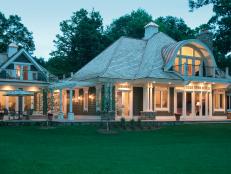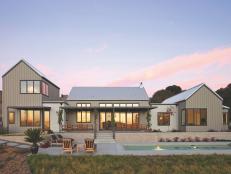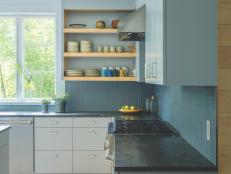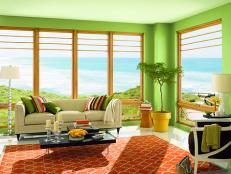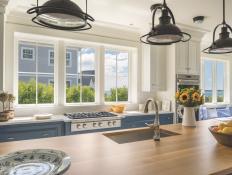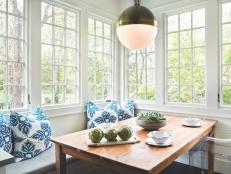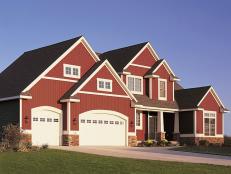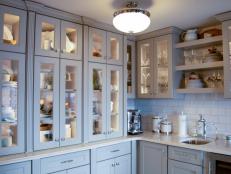Window Grids for Your Home Style

The style of your home will help you decide what type of grid pattern you want on your windows, and there are plenty to choose from in both ready-made windows and custom versions.
Most of the major window manufacturers offer prefinished grids in a host of colors to match the window frames. They come in wood, vinyl, metal and plastic composite materials to coordinate with the same materials as the windows. Just remember that the more elaborate the design, the higher the cost.

Colonial and Cape Cod Styles
Typically, these types of homes simply have divided light, double-hung windows with six individual panes of glass separated by muntins in both the top and bottom panels of the windows.
Fancier Colonial- or Cape Cod-style homes might have a large non-operating picture window with many small panes on the front of the home.

Prairie Style
Casement windows are popular on prairie-style homes. For decoration, they might have the grid pattern along the sides with a small square pane or light in each corner connected by a longer light along the top and bottom, leaving the center plain.

Arts and Crafts
These Craftsman-style homes sport a mix of full-pane windows on the bottom accented with divided panes on the top of their double-hung window. The divided lights are generally elongated, meaning they might have just three long panes on the upper sash and no cross pieces.
Non-opening transom-style accent windows divided into multiple panes by muntins running along the top of a group of windows are also a design element of the Craftsman aesthetic.

Cottage Farmhouse
Built with simplicity in mind, the cottage farmhouse typically has two panes of glass separated by a muntin on both the top and bottom of the window sash of their double-hung windows.
When closed, the windows have just four panes of glass. Of course this can vary. You might see the bottom half of the window as a single pane or a valance grid panel running along the top of the upper half of the window.

Tudor Styles
With their brick, stucco and exposed timber accents, many of these homes had diamond-pattern grids on their windows to add an Old World, European look.
The pattern might cover the entire window panel or just a portion, such as the top panel of a double-hung window. Tudors also fare well with casement windows with six, eight or more individual panes on the panel.

Victorian and Neo-Victorian
The Victorians loved elaborate decoration both inside and outside their homes. Diamond-patterned grids on the top of the window sash with a plain full-glass panel on the bottom were typical. They also embraced art glass windows full of colored glass that sparkled like jewels in the sunlight.
Today's newly built Neo-Victorian homes generally take on the Colonial-style window grid patterns with six or eight lights on each window panel of a double-hung window. For accents, fanlights over the windows and doors bring in more natural light.

Modern or Contemporary Homes
In the mid-20th century, home design evolved and plain glass panels became popular, specifically on crank-out casement or awning windows, devoid of any muntins for a sleek, clean look.
To add interest, the large expanses of glass could host a simple grid pattern such as a plain horizontal valance along the top of the window and another horizontal line running along the bottom of the glass giving the illusion of operating awning windows to let in fresh air.






